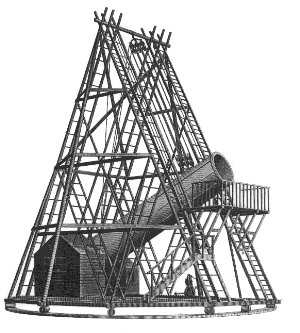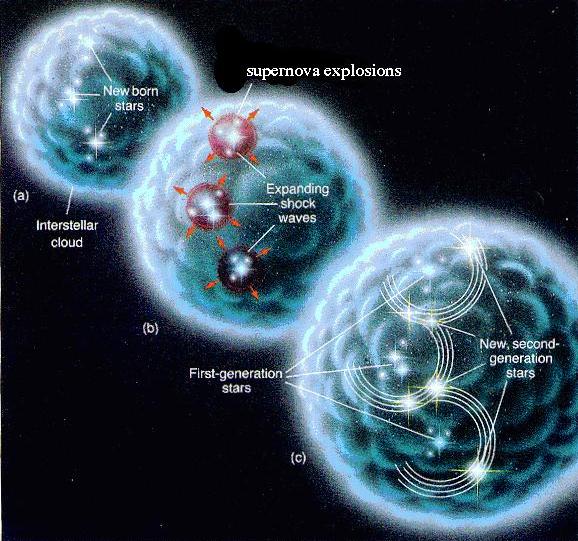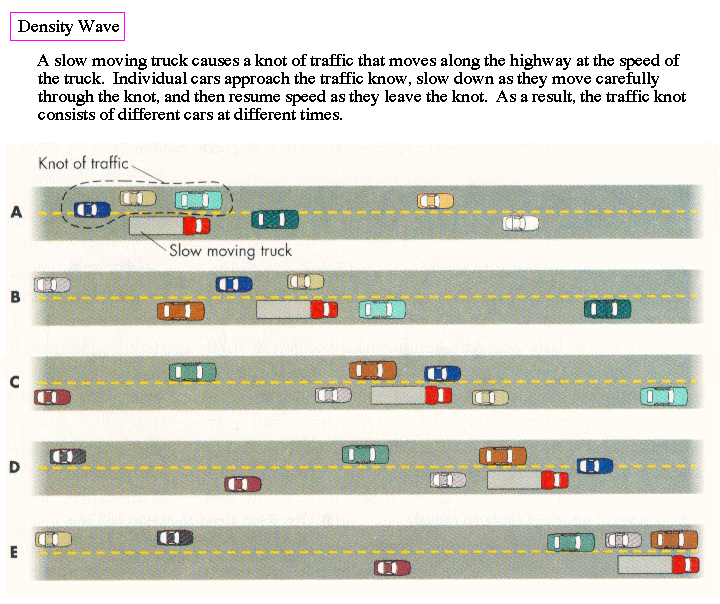
| Readings: |
Milky Way Star Formation |
Galaxies:
A galaxy is a collect of stars, gas and dust bound together by their common gravitational pull. Galaxies range from 10,000 to 200,000 light-years in size and between 109 and 1014 solar luminosities in brightness. The oldest discovery of non-stellar nebula is by al Sufi in the tenth century. While updating Ptolemy's star atlas he noted a `cloud-like spot' (near fish mouth below) in the constellation of Andromeda. Unknown to al Sufi, this cloud or nebula of light is the nearby galaxy, M31.

The first catalog of `nebula', fuzzy objects in the sky that were not planets, comets or stars, is attributed to Charles Messier in the late 1700's. His collection of 103 objects is the first galaxy catalog. Herschel (1792-1871) used a large reflecting telescope to produce the first General Catalog of galaxies, although it was still unknown at the time whether these were other star systems, or outside the Milky Way.

Before photographic plates, galaxies were drawn by hand by the astronomer.


Once explorers traveled to the Southern hemisphere, the Magellanic Clouds were discovered. Two dwarf galaxies that orbit the Milky Way. So in total three galaxies are visible with the naked eye.

Milky Way:
The closest galaxy to the Sun is, of course, the one we live in called the Milky Way or the Galaxy (note the capital 'G'). The name `Milky Way' comes from the band of light that is seen overhead on very dark nights. The ancients called it the Celestial River. Galileo showed that the band is actually an edge-on concentration of stars seen looking through the disk of our Galaxy from the inside. That same band looks very different when imaged at different wavelengths. For example, below is an image of the sky in the near-IR, sensitive to giant stars and dust.

The obvious interpretation of the Milky Way across the sky is that we live inside a disk galaxy. From our vantage point, we see the disk edge-on from within. Later mapping of variable stars, neutral hydrogen radio maps and star clusters gives us our current view of the shape, seen face-on, of our Galaxy shown below.

The key components of our Galaxy is a bulge of old stars in the center, a disk of stars and gas and a halo of old stars and globular clusters. The disk of our Galaxy is whirlpool shaped with numerous spiral arms spanning out from the center of the Galaxy. In the very center of the bulge of our Galaxy lies a nucleus, possibly a million solar mass black hole.
Notice that the total size of the Milky Way is about 100,000 light-years across, with the Sun about 1/3 from the center. Since the Galaxy is similar in shape to the solar system, we use a Galactic coordinate system where the plane of the disk forms the galactic equator. Angular distance from the center of the Galaxy eastward is galactic longitude, angular distance above or below the plane is galactic latitude
The orbital period of an object is just how far an object traveled divided by its velocity. In a circular orbit, how far is the circumference of the orbit such that the period, P, is
where r is the distance from the center and v is the velocity.
Since the Sun orbits the center of the Galaxy, we can use this knowledge to determine the mass of the Galaxy. Remember that Kepler's 3rd law states that the sum of the masses of two objects in orbit around each other is given by
Where r is given in A.U.'s (distance of the Earth to the Sun) and P, the period, is measured in years (the time it takes for the Earth to go around the Sun), thus the answer will be in solar masses. Notice that the mass of the Sun is really, really small compared to the mass of the Galaxy. So MGalaxy + MSun becomes just MGalaxy.
Stellar Populations:
The four primary constituents of any galaxy are stars, gas, dust and dark matter. There are about 1011 stars in the Milky Way, most of them in disk. The stars range in a varity of luminosities and colors, young stars tend to be bright, hot and blue, old stars are bright and red. Gas and dust make up the interstellar medium, where most of the gas is in the form of atomic hydrogen and dust consists of tiny lumps of solid compounds of carbon, oxygen and silicon.
A group of stars within the Galaxy that resemble each other in spatial distribution, chemical composition or age are called a stellar population. Stellar populations are not discrete in their properties, but rather have a continuum of characteristics that reflect the changes in star formation with time. Stellar populations are tracers of events in our Galaxy's past and formation.
There are basically three stellar populations in our Galaxy, corresponding to the three distinct dynamical components to the Galaxy; the disk population, the bulge population and the halo population. The disk population inhabits the rotating, flattened region of our Galaxy. The bulge population is restricted to the rounded, central region of the Galaxy, also rotating. And the halo population inhabits the far outer regions of the Galaxy, on long ellipisodal orbits that takes it into the disk and bulge.

The three components not only have distinct kinematic properties, but the types of objects in them also varied. The disk contains all the gas and young stars, although old stars are also found there. The bulge is dominated by old stars and a violent core. The halo contains very old stars and globular clusters. The reason for this separation of stellar types is a clue to how the Galaxy formed.
Star Formation:
Stars form inside relatively dense concentrations of interstellar gas and dust known as molecular clouds. These regions are extremely cold (temperature about 10 to 20K, just above absolute zero). At these temperatures, gases become molecular, the group together. CO and H2 are the most common molecules in interstellar gas clouds. The deep cold also causes the gas to clump to high densities. When the density reaches a certain point, stars form.
Since the regions are dense, they are opaque to visible light and are known as dark nebula. Since they don't shine by optical light, we must use IR and radio telescopes to investigate them.
Star formation begins when the denser parts of the cloud core collapse under their own weight/gravity. These cores typically have masses around 104 solar masses in the form of gas and dust. The cores are denser than the outer cloud, so they collapse first. As the cores collapse they fragment into clumps around 0.1 parsecs in size and 10 to 50 solar masses in mass. These clumps then form into protostars and the whole process takes about 10 millions years.

How do we know this is happening if it takes so long and is hidden from view in dark clouds? Most of these cloud cores have IR sources, evidence of energy from collapsing protostars (potential energy converted to kinetic energy). Also, where we do find young stars (see below) we find them surrounded by clouds of gas, the leftover dark molecular cloud. And they occur in clusters, groups of stars that form from the same cloud core.

The evolution of young stars is from a cluster of protostars deep in a molecular clouds core, to a cluster of T-Tauri stars whose hot surface and stellar winds heat the surrounding gas to form an HII region (HII, pronounced H-two, means ionized hydrogen). Later the cluster breaks out, the gas is blown away, and the stars evolve as shown below.

Often in galaxies we find clusters of young stars near other young stars. This phenomenon is called supernova induced star formation. The very massive stars form first and explode into supernova. This makes shock waves into the molecular cloud, causing nearby gas to compress and form more stars. This allows a type of stellar coherence (young stars are found near other young stars) to build up, and is responsible for the pinwheel patterns we see in galaxies.

Chemical Evolution:
Once the distinct kinematic components of the Galaxy had been isolated, an interesting fact arose in that the chemical composition of the stars in those components also varied in a regular manner. Disk and bulge stars tend to be rich in heavy elements (above helium on the periodic table). Halo stars tend to be very poor in heavy elements.
Changes in the chemical composition of a star are due to the initial chemical composition of the gas cloud that it was born from. This heavy elements are mostly produced by supernova explosions, gas clouds become enriched by the ejecta of supernova. The larger the number of supernova near a cloud, the richer in heavy elements it will become.

As time passes, each of the gas clouds in the Galaxy will increase in the abundance of elements such as carbon, iron, etc. So the more recent a star has been formed, the richer in heavy elements it is. This is a form of dating system for stars and we deduce that halo stars are the oldest stars in the Galaxy since they have the lowest chemical abundances. The disk stars are the youngest since they are the most metal rich.
Spiral Structure in the Galaxy:
It is difficult to measure the structure of our Galaxy since we are inside it (trying to see the forest from the trees). One method is to plot the position of tracer objects, such as young stars or molecular clouds. One such plot is shown below, the position of nearby HII regions and young clusters of stars. Since their age is young, then they will not have drifted far from their formation places.

Interstellar extinction, light blocked by dust and gas, prevents a map much larger than the one above for optical tracers, but even this plot is enough to show that there are distinct arms of material in the Galaxy. Maps of neutral hydrogen show the global spiral pattern throughout the Galaxy.
It is somewhat surprising that we even see a spiral pattern since the Galaxy does not rotate as a solid body. After a few rotations, the spiral pattern would be wound up very tight, as shown in the diagram below. This is known as the winding dilemma.

One explanation for the winding dilemma is to use density waves. Imagine a scenario such as shown below.

Even though all the cars and trucks are moving at different velocities, there is an apparent overdensity near the slow moving truck. A similar explanation is proposed for spiral arms in our Galaxy, they exist because they exert a gravitational influence on stars and gas that orbit the Galaxy. In particular, gas clouds will orbit slower in the arms and, thus, the density goes up in this region. The spiral arms don't wind up because they are not made of material arms, but rather density patterns that shift like cars in traffic.

The concentration of gas in the spiral arms explains why neutral hydrogen maps trace spiral structure, but why do young stars occur in spiral arms. Higher density of gas means more gas clouds and cloud collisions. This sparks star formation, which leads to HII regions and young clusters. As the young stars age, they drift out of the spiral pattern.


|
|

|